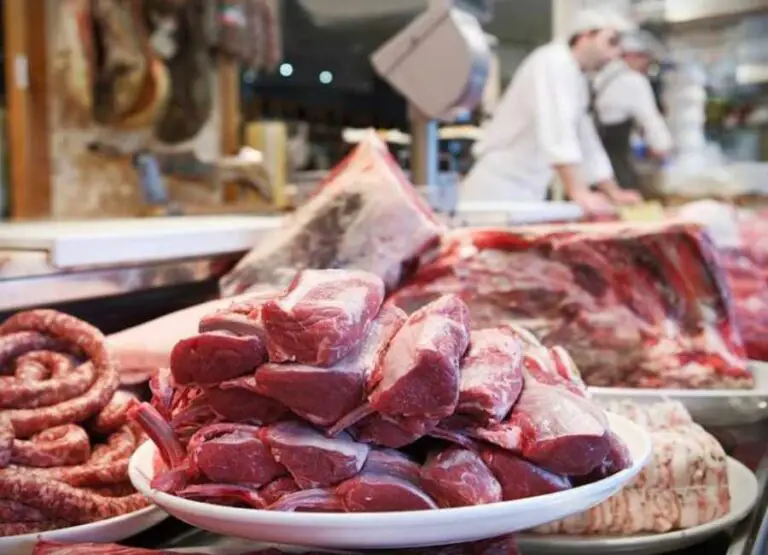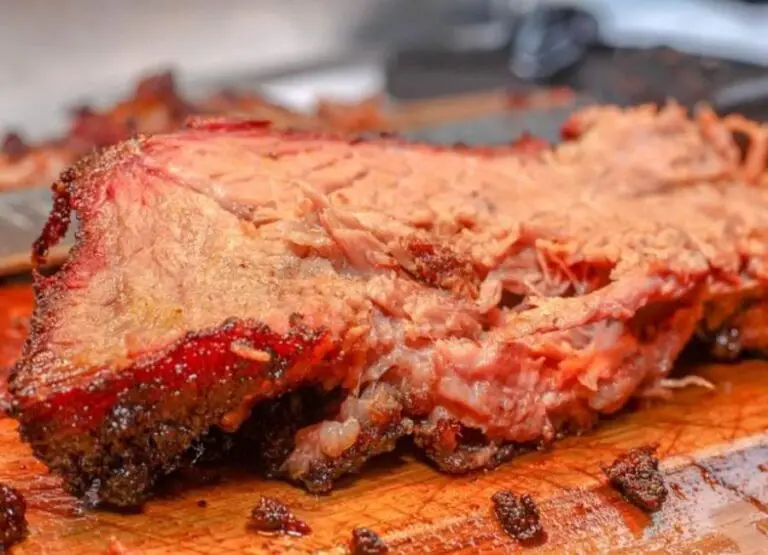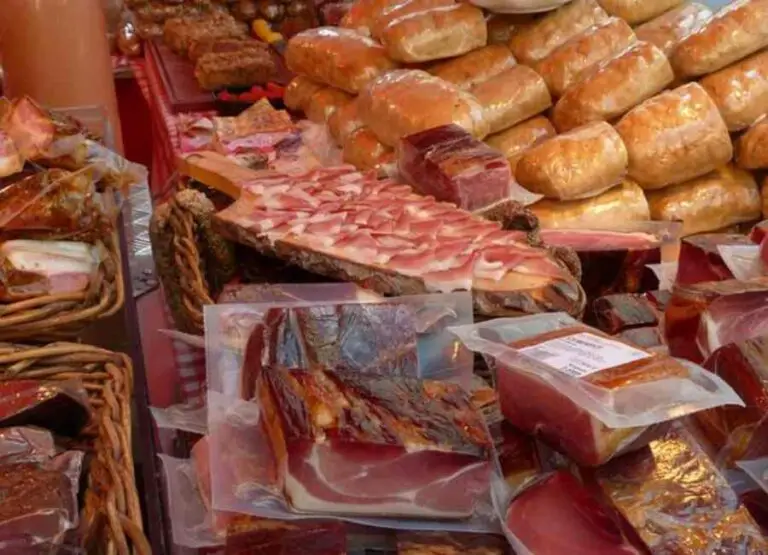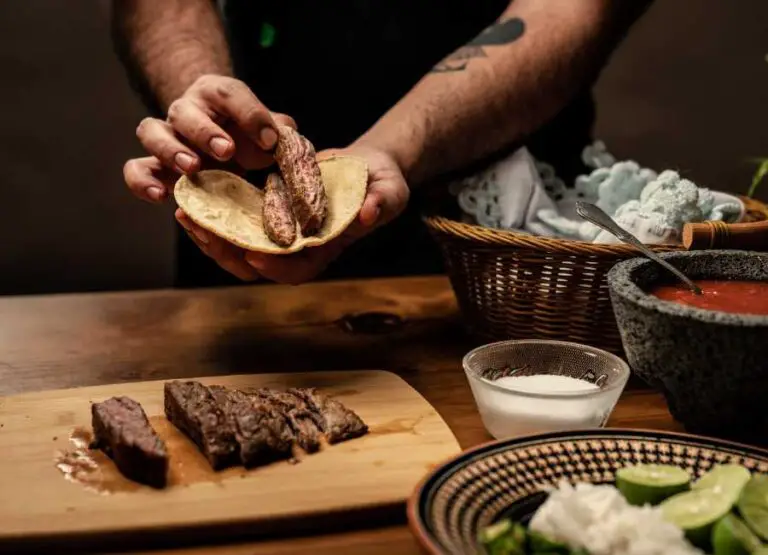Can Freezer Burned Meat Be Eaten [Answered]
Hey there foodies and home chefs! Let’s answer the question can freezer-burned meat be eaten?
Have you ever opened your freezer only to find some meat that looked dejected and was frozen at the back?
Freezer burn is a frequent issue that many of us have experienced.
What precisely is freezer burn, and maybe more importantly, can you still consume meat that has been frozen burnt?
Don’t discard it just yet!
We’ll examine the science behind freezer burn in this blog article and provide you with some advice on whether or not you may safely consume that meat.
Let’s thus get to the point at hand.
First,
What is freezer burn
Freezer burn is a type of dehydration that occurs when food is exposed to cold air over a long period of time.
It causes a loss of moisture, which can affect the color, texture, and flavor of the food.
Freezer burn does not make food unsafe to eat, but it can make it dry and unappetizing.
Can Freezer Burned Meat Be Eaten
Freezer-burnt meat may be eaten, however, it may not taste as well as a slice of meat that has not been freezer burnt.
The flavor and texture of the meat may be compromised, and it may become dry and leathery.
However, it is crucial to emphasize that freezer burn does not render food hazardous; it merely reduces the quality.
If the meat is still edible, it can be cooked and eaten normally.
What happens to meat when it gets freezer burned?
Meat that has been freezer burnt is exposed to cold, dry air, which causes moisture loss.
As a result, the meat’s texture might become dry and leathery.
Furthermore, the damaged regions of the meat may turn discolored, making it difficult to determine which parts are safe to consume.
To reduce freezer burn, wrap the meat in freezer paper or plastic wrap, then foil, before placing it in a freezer bag.
Additionally, before freezing the meat, remove as much air as possible from the packing.
Common reasons why meat gets freezer burned
Freezer burn occurs when moisture in meat evaporates and freezes on the surface, forming microscopic ice crystals.
This causes the meat to become dehydrated, discolored, and have a rough texture.
Here are seven typical causes of freezer-burnt meat:
- Freezing old meat: Meat that has been sitting in the refrigerator for too long before being frozen may be dehydrated, making it more prone to freezer burn. To avoid this, it’s important to freeze meat as soon as possible after purchasing or preparing it.
- Large portions: Large chunks of meat or parts that have not been properly separated into smaller portions might increase the probability of freezer burn. The surface area of the meat that is exposed to air and moisture is larger, increasing the likelihood of freezer burn.
- Overcrowding: When the freezer is overcrowded, ventilation is restricted and the temperature fluctuates, increasing the danger of freezer burn.
- Not using a deep freezer: If you don’t have a deep freezer, the cold air may circulate more and cause the meat to become exposed and the freezer to burn.
- Improper packaging: Meat that is not snugly wrapped or properly packed before freezing is more prone to suffer freezer burn. Exposure to air and moisture can induce dehydration and freezer burn.
- Long-term storage: The longer meat is kept in the freezer, the more likely it is to develop freezer burn. The moisture in the meat will evaporate and create ice crystals on the surface over time.
- Leaving the meat exposed to air: Avoid exposing the meat to the cold, dry air of the freezer, since this can cause freezer burn.
How to identify freezer-burned meat
Freezer burn occurs when air comes into touch with the surface of frozen meat, producing dehydration and oxidation.
Here are several tell-tale indicators of freezer-burned meat:
- Appearance: The surface of freezer-burned beef may have white or grayish-brown spots. The skin’s surface may also seem dry, leathery, or shriveled.
- Texture: When you touch freezer-burned meat, it may feel rough, dry, or gritty. When you try to chop or slice the meat, it may have an inconsistent texture and crumble.
- Odor: Freezer-burned meat may have an off-odor or a weird odor that differs from the fragrance of fresh meat.
- Ice crystals: If you notice ice crystals on the surface of the meat, this might indicate freezer burn. This occurs when the water in the meat evaporates and re-freezes, resulting in ice crystals on the surface.
- Taste: Freezer-burned meat may taste different from fresh meat. Because of the moisture loss, it may taste bland or strange.
- Packaging: If the meat’s packaging has become brittle or discolored, this might be an indication of freezer burn. If the meat is not adequately wrapped or sealed, it is more prone to freeze-burn.
Chemical changes that occur during freezer burn
Protein denaturation, color and vitamin degradation, lipid oxidation, enzymatic reactions, and taste deterioration are among the chemical changes that occur during freezer burn.
Furthermore, enzymes in fresh food can cause color loss, nutritional loss, taste alterations, and color changes in frozen fruits and vegetables.
Moisture loss from a product’s surface area can also result in freezer burn.
How to safely handle and cook freezer-burned meat
Freezer-burned meat can still be handled and cooked properly, but some measures must be taken.
Before or after boiling the item, the FSIS suggests chopping off any freezer-burned areas.
If the food has been extensively freezer-burned, it is better to throw it away because its quality has been affected.
It is critical to thaw freezer-burned meat carefully in the refrigerator or a bowl of cold water before handling and cooking it.
If the meat has suffered from freezer burn, it can be utilized to flavor stock or broth.
Alternatively, while creating stew or stir-fry, the freezer-burnt bits can be eliminated and replaced with new components.
How to prevent meat freezer burn
To prevent meat freezer burn, you can take the following steps:
- Use quality packaging: The meat packing should be of high quality and intended for freezing. This form of packing will aid in the preservation of the meat and the prevention of freezer burn. Good solutions include vacuum sealing, freezer bags, and aluminum foil.
- Remove excess air: To avoid freezer burn, remove extra air before sealing the box. Before sealing, use a vacuum sealer or push the air out of the bag.
- Keep the temperature consistent: Ensure that your freezer is continuously set at or below 0 °F (-18 °C). Temperature fluctuations might result in freezer burn.
- Freeze meat quickly: To prevent the meat from remaining at room temperature for too long, freeze it as soon as possible after purchase or preparation. A short freeze lowers the possibility of freezer burn.
- Utilize meat within the indicated time period: Because various types of meat have varied storage durations, use the meat within the specified time range. Ground meats, in general, should be utilized within 3–4 months, although bigger chunks can be kept for up to 12 months.
How to wrap and package meat to prevent freezer burn
Wrap and package meat with plastic wrap, waxed paper, aluminum foil, or a mix of these materials to avoid freezer burn.
Wrapping the meat in freezer paper with a solid layer of wax on one side is also useful.
Finally, for added protection, place the wrapped meat in a freezer bag.
Learn more about meat going bad in the freezer.
Ideas for using freezer-burned meat in recipes
There are several inventive ways to incorporate freezer-burned meat into meals.
For example, you may create tacos with shredded or ground freezer-burned beef, or use it to add flavor to casseroles and soups.
Small bits of freezer-burned beef can also be used in stir-fries or chopped up and added to chili.
Another alternative is to create burgers or meatballs with the meat or to use it in a pie or quiche.
You may also ground the meat to make your own burger patties or sausage.
Finally, the meat can be used in a pot pie or Shepherd’s Pie.
Best practices for storing meat in the freezer
It is best practice to store meat in the freezer as quickly as possible, ideally within two hours of purchase.
Make sure the meat is sealed in an airtight container or freezer bag, and label it with the date of purchase.
It is also important to freeze only the amount of meat that you will consume in a few days, as meat can lose its quality and taste after being frozen for too long.
Additionally, make sure to follow any cooking and thawing instructions provided with the meat.
Learn more about where to store meat in the fridge.
Conclusion
Folks, there you have it! Even while freezer burn may not be the tastiest-looking condition, it doesn’t always indicate that your meat will end up in the garbage.
You can safely evaluate whether your freezer-burned meat is still edible by learning what freezer burn is and knowing what symptoms to look for.
Always trust your senses and instincts when uncertain.
In case nothing else works, you may always use the freezer-burned meat in stews, soups, or other dishes where it won’t be the main attraction.
So go ahead, enjoy your freezer, and resist letting freezer burn win!



![Do You Flip Meat When Smoking [Answered]](https://foodcreeks.com/wp-content/uploads/2023/02/Do-You-Flip-Meat-When-Smoking-768x555.jpg)



![Why Do I Poop Multiple Times a Day [9 Reasons]](https://foodcreeks.com/wp-content/uploads/2024/03/IMG_COM_20240303_1534_26_2921-768x370.jpg)